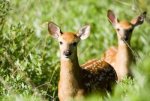"Spotting" Whitetail Deer Fawns
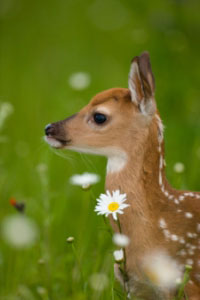
Everyone thinks whitetail deer fawns are cute and playful. If you are an avid hunter, it is important to become familiar with the life cycle of the whitetail deer, beginning with its birth.
One way I track fawns and does are with trail cameras. Even if you are a non hunter and want to keep track of them when you are not around, this is the answer.
A doe goes into estrus in the fall, which means whitetail deer fawns are normally born sometime between late April and early July.
Does birth one, two or sometimes three fawns. Though triplets are not
as common, twin fawns are often spotted by recreational sports persons
and hunters.
At birth, white tail fawns have a spotted reddish coat that is fairly silky. There may be several hundred spots on the coat. The spots enable the fawn to camouflage itself, with the colors blending well with the surrounding natural environment. They usually weigh between 4 to 8 pounds at birth.
The whitetail fawn loses its spots by the end of October of the same year it was born, or within 3 to 4 months after birth. To me now is a good time to put out some cameras to see what if any fawns are born in your area.
Even for the non-hunter it is so great to watch the fawn grow into being an adult.
Natural Protection
The fawn is also weaned by the time it loses its spots. By November the average whitetail male fawn will weigh close to 80 to 85 pounds, and the female fawn will weigh 75 to 80 pounds.
As the spots disappear, the fawn's coat also changes from its reddish color to a grayish winter coat. The buck fawn's face grows a bit darker in color but the belly remains white.
When a fawn is born it is odorless so that predators are not attracted to its location. In fact the mother doe will stay away from the fawn for a few days so that her scent does not rub off on the fawn or attract predators to the area where the fawn is hiding while gaining strength.
When a fawn detects danger it will remain perfectly still. Fawns that live past the first week have a good chance of surviving to adulthood.
Mom to the Rescue
Fawns normally don't make any noises except for occasional bleating when in distress. When the fawn bleats and the doe is unable to see the fawn, she will come running to the fawn's rescue. A doe and her fawns live as a family group until the fawns are weaned.
Sometimes multiple does and whitetail deer fawns will group together. Interestingly, the area where the fawn is born normally becomes its adult habitat.
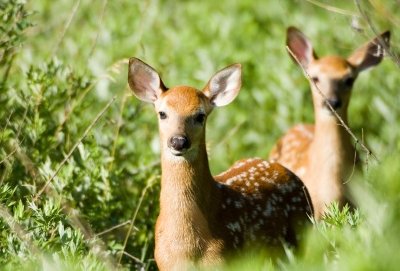
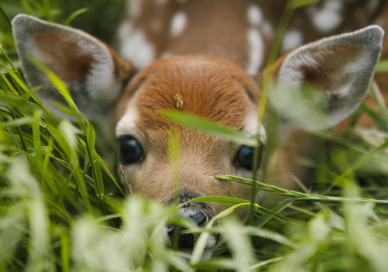
Whitetail Deer Fawn
The buck fawn above is only a few days old. You can see the two round spots on his head between his ears and eyes that gives this information.
The two below are a few months old and getting a lot wiser to the ways of the Whitetail Deer World. The one facing the camera is a buck because you can see the nubs on his head sticking up about an inch in the same spot as the picture above.
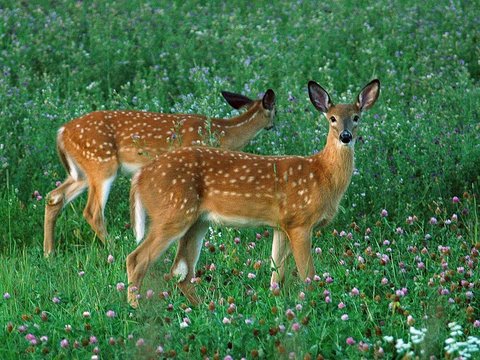
Thank you for stopping by and please feel free to contact us to let us know what your think about our site. Give us your suggestions for changes and we will do our best to make those changes.
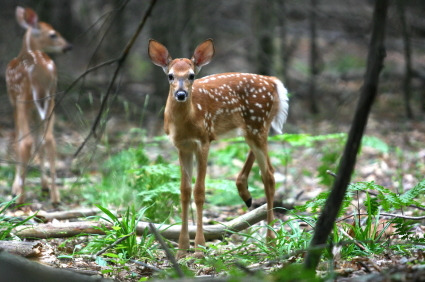
Whitetail Resources

Field Dressing a Deer Instructional Ebook
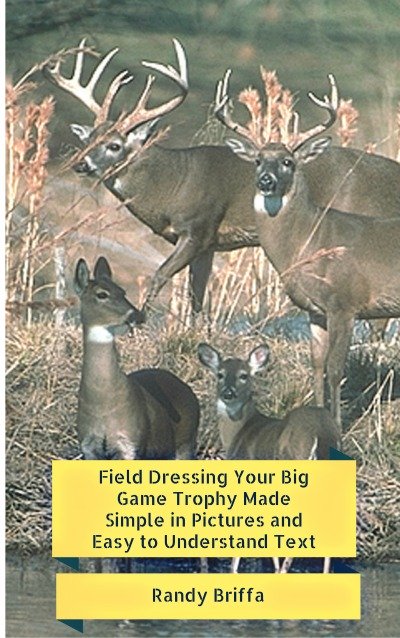
Price: $9.95

My New Site Dedicated To Deer Hunting
Recent Articles
-
Biggest Whitetail Deer
Aug 31, 24 09:18 PM
Fall is the time for the Biggest Whitetail Deer to assert their dominance during the rut. -
Whitetail Deer Fawn Fall
Aug 31, 24 09:17 PM
Whitetail deer fawns are born in late spring with spots. By winter they have lost their spots and their coats have changed color. -
North American Whitetail Fawns
Aug 31, 24 09:17 PM
North American Whitetail deer fawns are born in late spring with spots. By winter they have lost their spots and their coats have changed color.
My New Site Dedicated To Deer Hunting

Questions and Comments
Please use the contact us page for any questions or comments you may have. We may post them on our site with a reply. You will also receive a personal reply from us. We want to make this site as relevant to your needs as we can. Just let us know how we can help you.
And thanks for stopping by. Have a great day.
Randy


